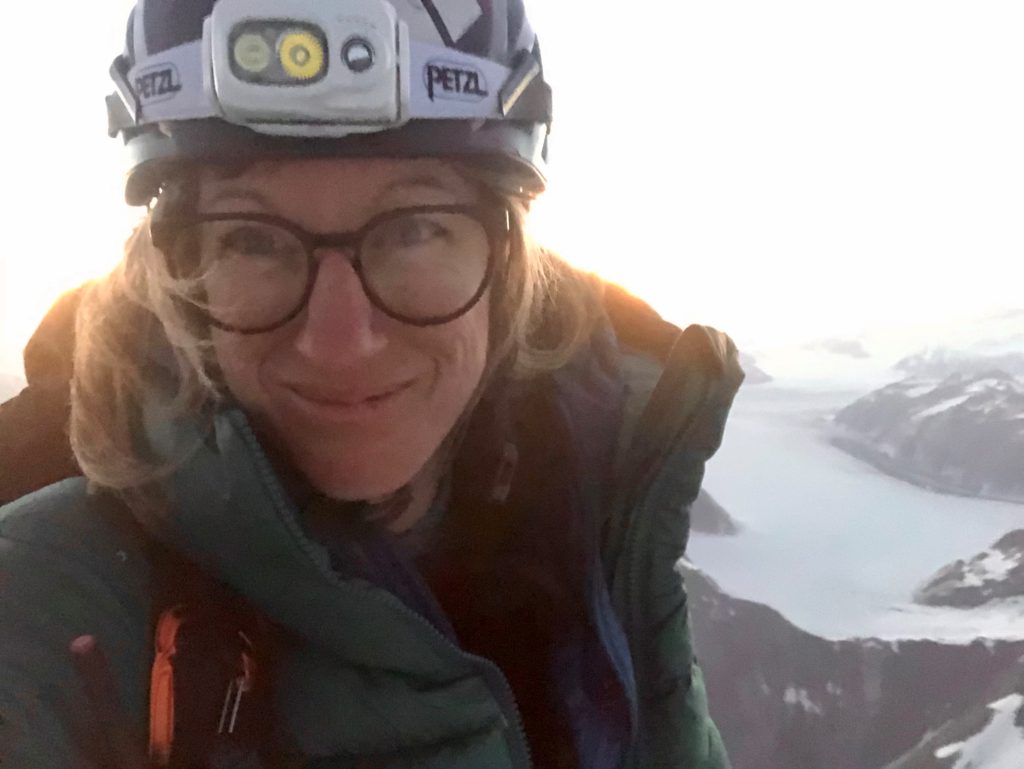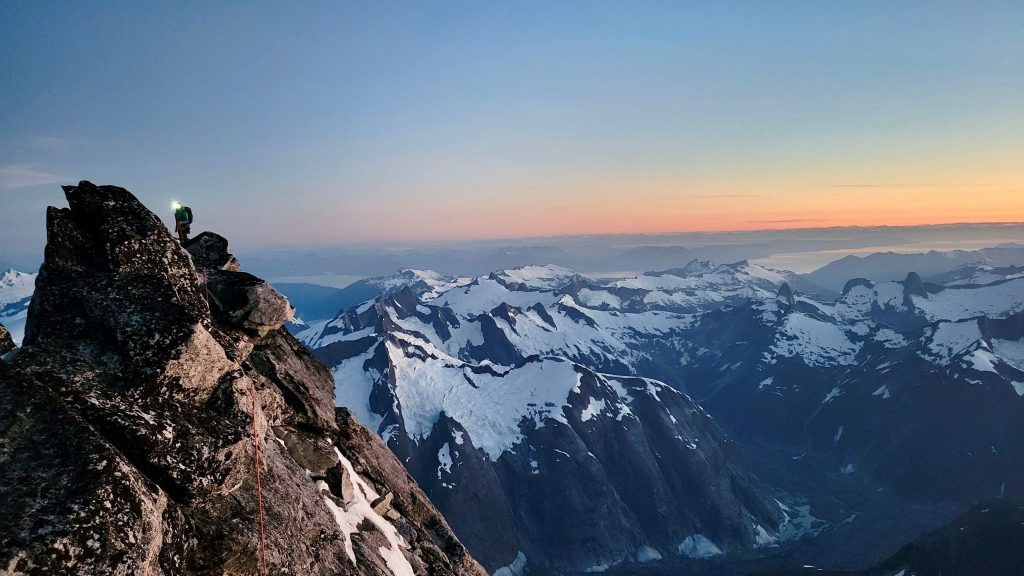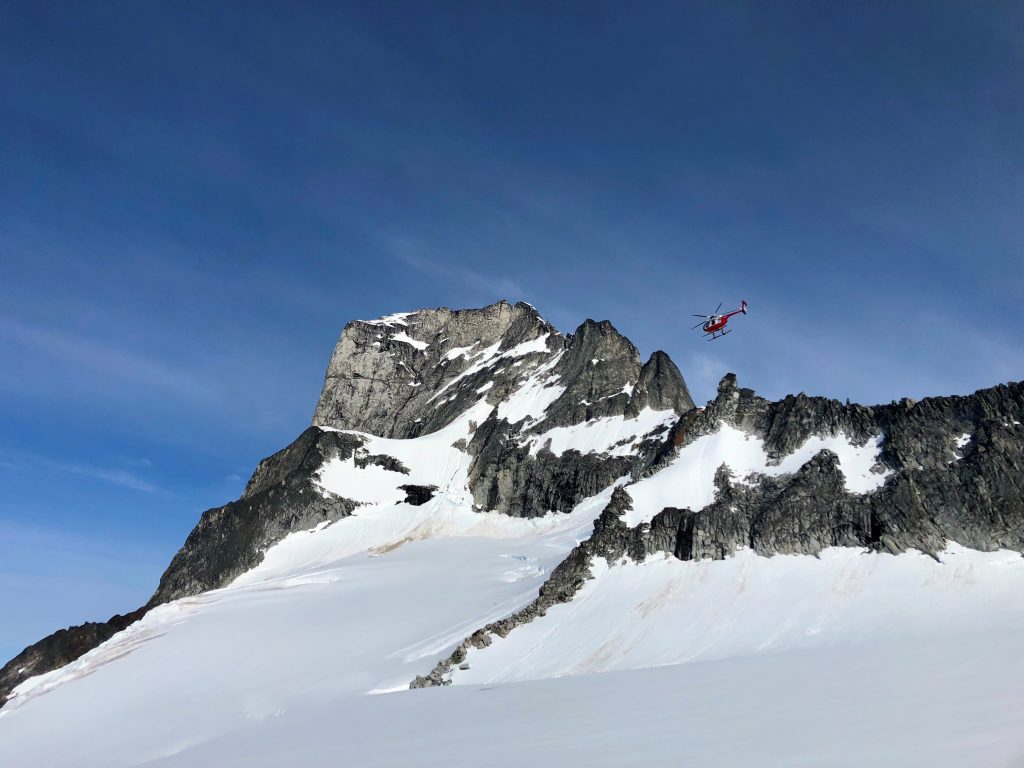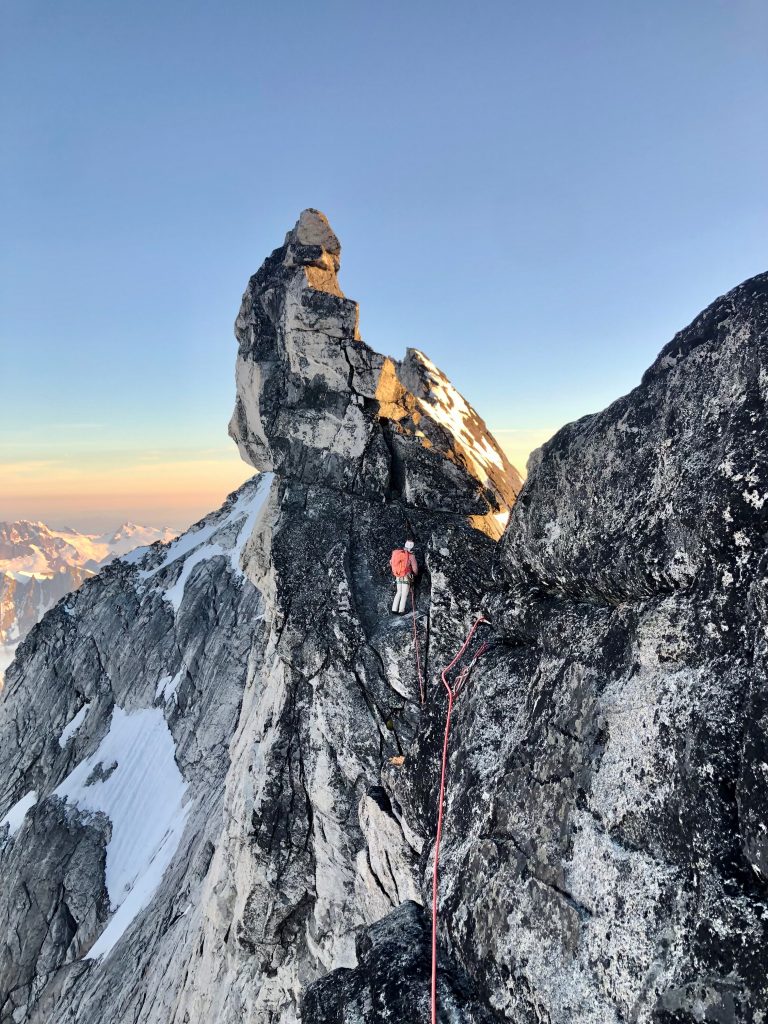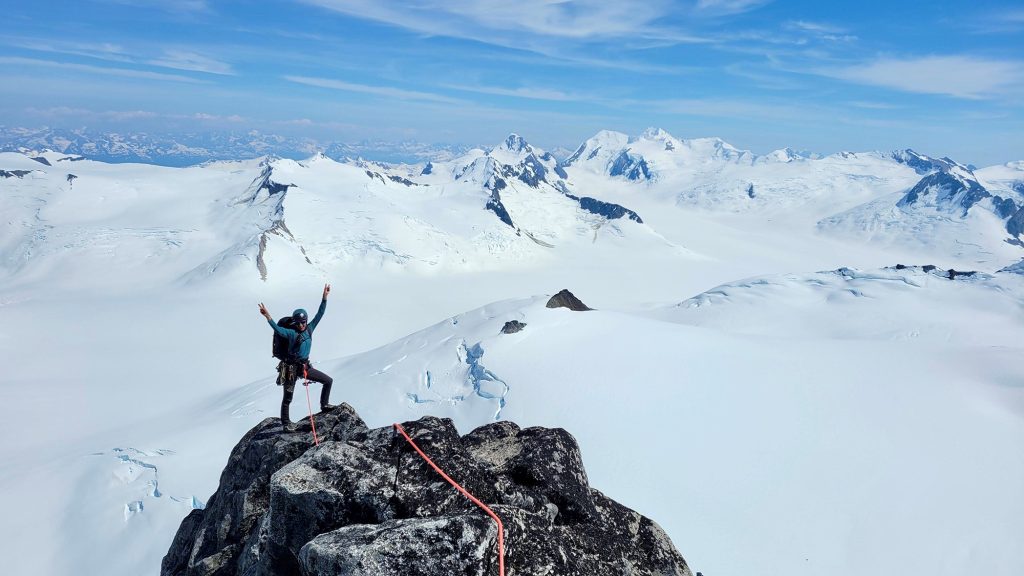RAPID CITY, SD – Rising nearly 9,000 feet above the Pacific Ocean, Alaska’s Devil’s Thumb is as infamous as it is remote-a jagged peak known for brutal weather, frequent avalanches, sheer ice walls and a history of turning climbers back. Few have ever stood on its summit. None had done so as an all-women team.
Until this summer.
Mary Witlacil, Ph. D., a South Dakota Mines assistant professor of political science, and her climbing partner, Sarah Malone, etched their names into mountaineering history when they conquered the mountain’s eastern ridge.
“It was unreal,” Witlacil said. “I had so much anxiety about climbing this mountain and whether we would be successful. But getting to climb the peak safely, successfully and in good style, it just felt so good. It was the culmination of so many years of spending time in the backcountry honing my craft.”
Having grown up in Colorado, Witlacil learned the art of rock climbing on the Front Range. Then she expanded her skills with winter mountaineering and ice climbing in the San Juan Mountains while living in Durango.
After spending a climb-free year in France, Witlacil returned to her love of exploring granite peaks with a new goal in mind – climbing the Diamond on Longs Peak, the east face of the peak named for the shape of the cliff.
She spent years sharpening her skills and getting stronger and five years after setting her goal, she achieved it. That summer alone, she climbed the Diamond four times and has returned many more times since.
“I climbed Pervertical Sanctuary, and it really cemented my passion as an alpine climber,” Witlacil said.
It was through climbing in Rocky Mountain National Park, or “The Park”, that Witlacil met Malone.
The two quickly hit it off and began coordinating climbing trips around their busy lives—Witlacil as a professor and Malone as a veterinarian. In the summer of 2024, they had hoped to climb the Diamond again, but as often happens, the weather forced them to call off the attempt. Instead, they set their sights on something bigger for the following summer: summiting Devil’s Thumb.
“It was a stretch for me because I didn’t have as much experience on glaciers as she does,” Witlacil said.
Malone had attempted the climb before and already knew much about the mountain and the complex logistics required, including several plane rides, a helicopter trip and backcountry travel.
“We met up in November to go ice climbing in Cody (Wyo.), and talked about it more,” she said. “We decided we were going for it, knowing that it was a very serious endeavor. It is a dangerous mountain.”
The mountain’s icy northern face remains unclimbed and has claimed the lives of three people who tried.
“That was not our objective, but even the route we took, the southeast ridge, has a lot of loose rock, and a man was killed in an avalanche 500 yards from where we had our base camp,” Witlacil said.
To prepare for the 5.8-rated peak, Witlacil trained with Pilates, weightlifting, hiking and rock climbing. In the month leading up to the expedition, she lived in Colorado, alpine rock climbing and hiking mountains above 11,000 feet to acclimate to the elevation.
She also closely monitored the forecast, pinpointing Monday as the best window for their ascent.
The plan was to fly to Petersburg, a remote, small-town Alaskan community closest to Devil’s Thumb, on Sunday to start the climb on Monday, the sunniest day predicted.
But the trip did not start smoothly. Their first flight was delayed to the point they would miss the only connection to Petersburg. Scrambling for another option, Witlacil and Malone secured the last two seats on another airline.
Once in Petersburg, they gathered final supplies, packed for two nights on the glacier and the climb to the summit.
Before heading out, they got some last-minute advice from Dieter Klose, a climbing legend who settled in Petersburg after falling in love with Devil’s Thumb, and Wally, a Temsco helicopter pilot who has ferried countless climbers – some triumphant, many not – to the mountain.
Once on the glacier, Witlacil and Malone studied the route, scouted the ascent and descent to ensure they could safely retrace their way to base camp in the dark.
“Then we just hung out at base camp,” Witlacil said. “It was unnerving because there were constant avalanches shaking the valley. There was definitely a feeling of, ‘this is a pretty serious place to be.’”
They woke at 4 a.m., fueled with coffee and breakfast, and started the climb before sunrise. The route, a mixture of ice, snow and rock, is technical with vertical ascents, rappels and repeated climbs.
“We moved pretty quickly up the snow, only crossing one crevasse that felt pretty safe because it had a pretty big snow bridge,” she said, adding that their body weight secured the other as they both maneuvered across the gorge.
Some areas took them a little longer.
“Some pitches felt like climbing a house of cards where every hold you grabbed was loose – sometimes there were multiple pieces of rock glued together, and it felt like they were all going to break,” Witlacil said. “At some points, it was slow going. We were so tenuous and careful about how we moved on this mountain.”
Through technical pitches, snow traverses, and tangled and stuck ropes, the two made it to the summit, reveled briefly in their accomplishment, and started the trek down in the dark without even taking a team selfie. The descent included more twisted ropes, soaked clothes and a lack of food.
In 26 hours from tent to tent, Witlacil and Malone made history – the first all-women team to tackle Devil’s Thumb – a historic achievement that showcased Witlacil and Malone’s perseverance, partnership and spirit of adventure.
“I don’t think I fully realized the magnitude of the experience until after the fact,” Witlacil said. “There’s something truly special about sharing such incredible and challenging adventures in the backcountry with other women.
